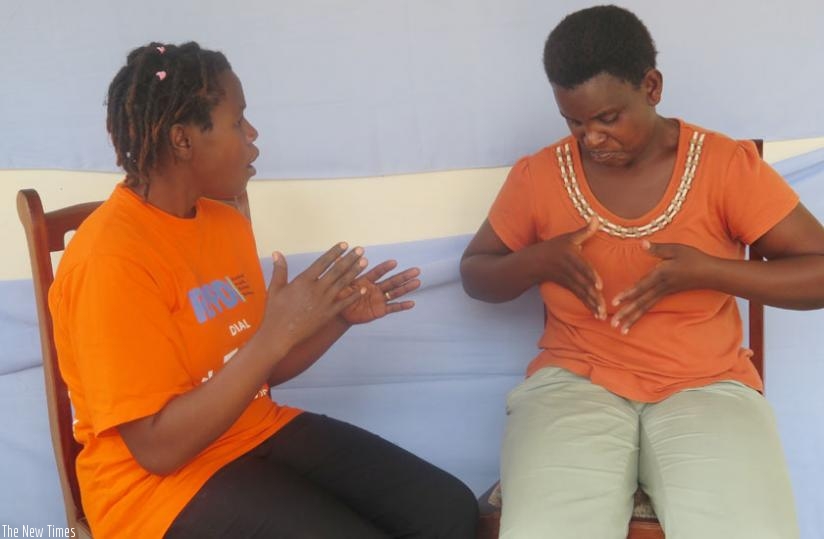The National Council for Persons with Disabilities (NCPD) in partnership with the Rwanda National Union of the Deaf (RNUD) are working on a comprehensive sign language dictionary expected to be ready before the end of next year.


The National Council for Persons with Disabilities (NCPD) in partnership with the Rwanda National Union of the Deaf (RNUD) are working on a comprehensive sign language dictionary expected to be ready before the end of next year.
The project, sponsored by Voluntary Service Overseas (VSO), started in November last year with training of the project team on the essence of sign language dictionary and how it will benefit people with hearing impairment.
The field work consisting of research on the sign language in Rwanda started on Monday in Huye District, Southern Province and is expected to cover the rest of the country.
The dictionary once complete will help address challenges faced by people with hearing impairment in accessing some services or expressing themselves in a community that hardly understands sign language.
Sylvie Nyirabugenimana, Disability Friendly Communication Officer at NCPD, said people with hearing impairment find difficulties in accessing services because they cannot express their views and feelings in an articulated language.
"For insistence, a deaf patient gets difficulties expressing their suffering or health state to doctors who do not understand sign language. This often results in wrong prescription,” she said.
To address the challenges, NCPD and RNUD want sign language to be incorporated in schools.
Dr Sam Lutaro-Kiingi, a lecturer of sign language at Kyambogo University’s faculty of Special Needs & Rehabilitation, Uganda, while speaking through an interpreter, said the dictionary has to fully represent all the provinces.
"The content of the first sign language dictionary was from foreign countries and did not incorporate aspects of the deaf communities in developing countries. That’s why we are involving the deaf in this research,” he said.
Dr Lutaro-Kiingi, who is deaf, is also a member of the team which edited the Uganda Sign language Dictionary.
Nyirabugenimana said the first edition was not comprehensive.
"We have realised the first sign language dictionary had few signs and used drawings to show meaning of certain things but did not consider the facial expression which is very important in the communication process,” she said.
She added that the sign used in one country might differ in meaning once used in another, hence the need for a Rwandan culture based sign language dictionary, which represents the Rwandan context.
The first version produced in 2009 had about 900 signs. The new method of collecting views involves bringing two or more people with hearing impairment together and letting them engage in a conversation. In addition, each person is also allowed to express their ideas.
Nyirabugenimana said this approach allows them to express themselves freely and their sign language is recorded on camera for future reference.
"Research is carried out to help solve a problem. We want sign language to be used effectively in schools, hospitals and other public places,” said Liliane Umurerwa, the project manager.
Body signs are being recorded and a team of experts in sign language will choose the most suitable signs to be used to deliver particular meanings.
editorial@newtimes.co.rw


